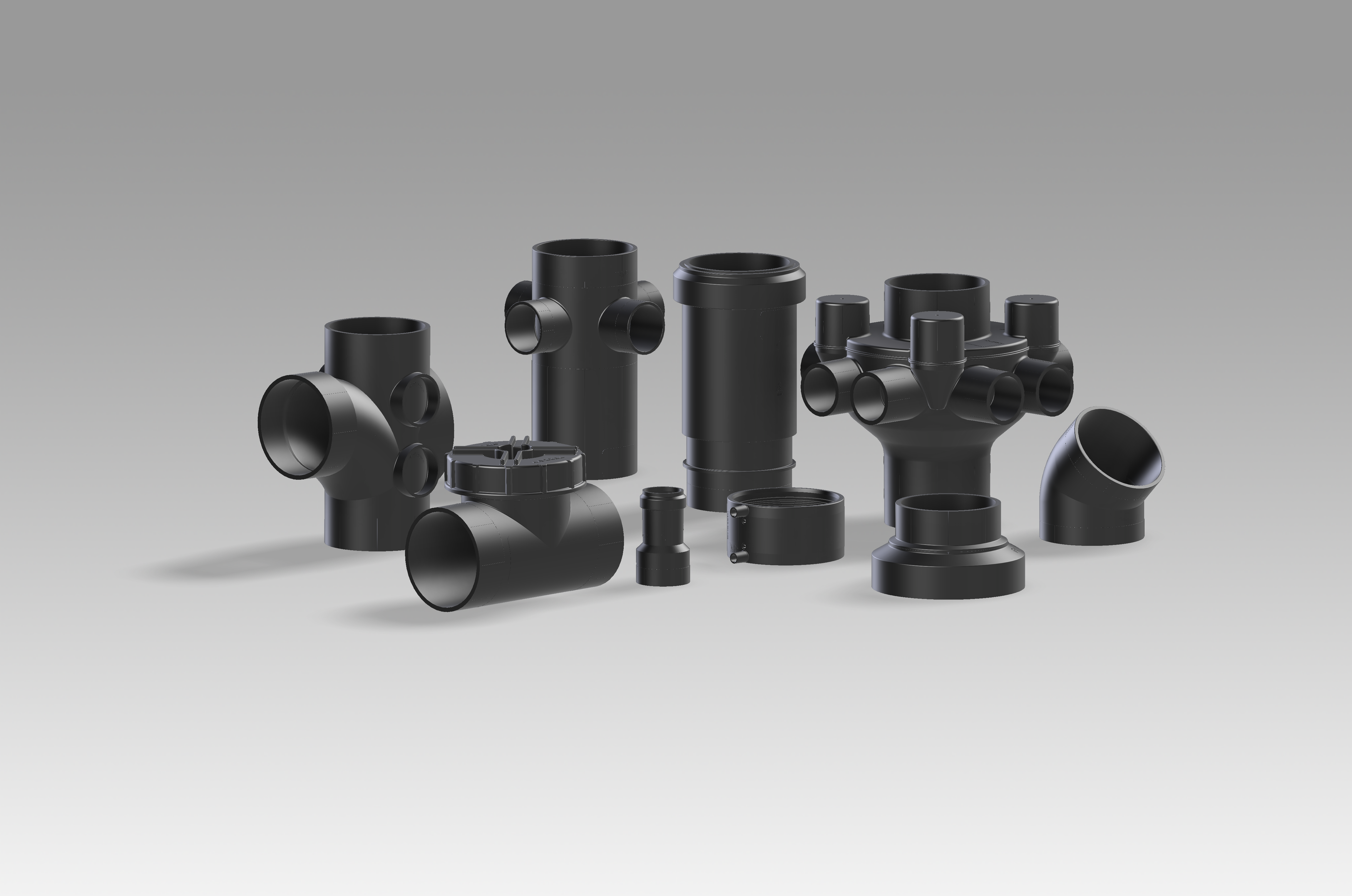Henniker Point
A more efficient custom drainage system for tower block RMI project.
The high-rise Henniker Point building in Newham, East London dates from 1969 and is home to 91 flats. When signs appeared that the existing cast iron soil stack needed replacing, contractor Mulalley wanted to identify the most efficient way to undertake the work with minimal disruption to residents.
Polypipe Building Services Project Development Manager Graham Hicks: “Our site visit and report showed that there were different layouts across the flats, with some having a different bathroom configuration to the others within the building which meant creating a separate set of drawings. This made the project particularly tricky, because from the third floor down to the basement a different layout was needed for the drainage system to the rest of the building, while adaptation work was needed to the pipework which included designing soil stacks with very tight waste connections set at angles, often tightly spaced above each other. “Furthermore, floor three needed a vent pipe for pressure compensation to the main 160mm diameter soil stack which had to be custom engineered, together with the additional piping connections needed on the lower floors. This was because in some cases there was only 0.75mm between some of the fittings needed for waste connections for all the sinks, toilets, and low-level showers.”
Complicated building layouts.
Public sector RMI projects can be notoriously complex, as older buildings will often have been subject to different phases of renovation – meaning off-the-shelf drainage stacks can typically need time consuming adaptation work to install. Henniker Point was just such a complex building, and so consultants John Rowan & Partners and Polypipe Building Services were called in to explore options for the most durable and efficient solution. Polypipe’s work began by conducting a report on the existing drainage system to develop a design tailored to the layout of the building. With the original drawings for older buildings often not available or not representative of any subsequent modification work, this is an important step in ensuring the solution reflects specific project demands.
A more efficient solution.
The complexities presented by the building meant that a solution that would minimise the time needed on site to adapt standard stack pipes and fittings would be best. Polypipe’s Terrain FUZE drainage system was chosen because it has been used in more than 300 highrise buildings and means minimal disruption to residents as sections can be replaced section by section and floor by floor. Crucially, using Polypipe’s Advantage service meant that the drainage system could be fabricated offsite in the unique configuration needed and delivered to fit straight into Henniker Point.
Ciaran O’Donnell, contracts manager at Mulalley said: “Drainage stack replacement is notorious for being a complex and disruptive job, so we look for ways to ensure clients receive a quality product but with minimal time on site when residents can’t use toilets, sinks and the like. “We have worked with Polypipe Building Services for some time, and value both the expertise they offer in finding the right solution for specific project challenges, and the efficiency savings we can make by using their Advantage service to produce prefabricated stacks that are easier to fit on site. “In the case of Henniker Point, Polypipe’s team was a great help in making sure we could plan for the unique layout of the building. The ease of installation the Terrain FUZE system offered meant that our installation team were able to progress at a rate of two floors faster per day than originally estimated because they were not assembling loose materials onsite. “This meant less time on site, less disruption for residents and a more efficient project schedule for the client.”
The removal of an old failing cast iron drainage stack.




